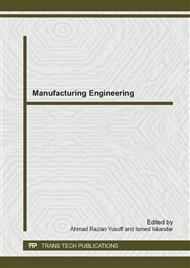p.384
p.390
p.396
p.402
p.408
p.414
p.419
p.425
p.431
Integrating Reliability Analysis in Life Cycle Cost Estimation of Heat Exchanger and Pump
Abstract:
This paper presents a mathematical model to estimate the life cycle cost (LCC) of heat exchanger and pump. Maintenance cost, down time cost and acquisition costs are calculated. The main uncertainty in calculating these costs are prediction of number of failure and cumulative down time. Number of failure is determined using failure and repair time density function. According to the characteristic that the cumulative failure probability observed, a Weibull distribution model is used. The scale and shape parameters of the Weibull are extracted from the published data. The results of the study show that 71.3% loss in the reliability of heat exchanger and 34.2% reliability loss in pump could lead to 66.2 % increment of the total cost. The reliability of the system decreases because of number of failures will increase each year, and this failure leads to unavailability of the system.Therefore in order to achieve higher system effectiveness and reduce the total LCC, the reliability of the systems need to be increased through proper maintenance policies and strategies. The results of the study could assist the managers to make decision with high degree of accuracy.
Info:
Periodical:
Pages:
408-413
Citation:
Online since:
February 2014
Authors:
Keywords:
Price:
Сopyright:
© 2014 Trans Tech Publications Ltd. All Rights Reserved
Share:
Citation:


